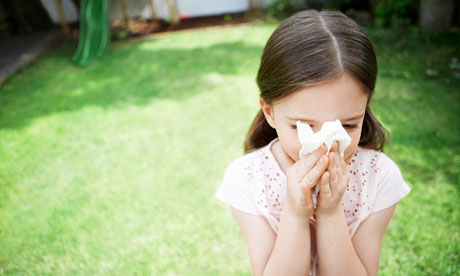
This year has seen many early victims of hay fever, well before most newspapers have begun carrying daily pollen forecasts. The combination of warm, dry weather, brisk breezes, and air pollution has created a potent mix for the 12 million UK sufferers. Large quantities of the yellow stuff have also been blown across from continental Europe on easterly winds. Although most hay fever sufferers, as the name suggests, get symptoms as a result of pollen from the 150 species of grass flowering from May until August, there are many other pollens that can trigger symptoms.
Tree pollen, beginning with hazel in January, and then from March through April alder, willow, poplar and birch, affects different groups of people. At this time of year oak and pine are a problem. Later, in the autumn, some weeds and fungi spores can lay low other groups. Pollen is at its heaviest concentrations between 6am and 9am and in the evenings, but this depends heavily on the weather. A good spell of rain literally washes it out of the air.
Hay fever is miserable. Sufferers are warned to avoid going out on warm sunny days, to not hang washing out because it acts as a pollen trap, and even to brush the pets when they come in. City dwellers can get even worse symptoms than country folk because traffic fumes compound the effects of pollen. Even if you venture out you are advised to wear wraparound sunglasses. Hope for frequent sharp showers.

